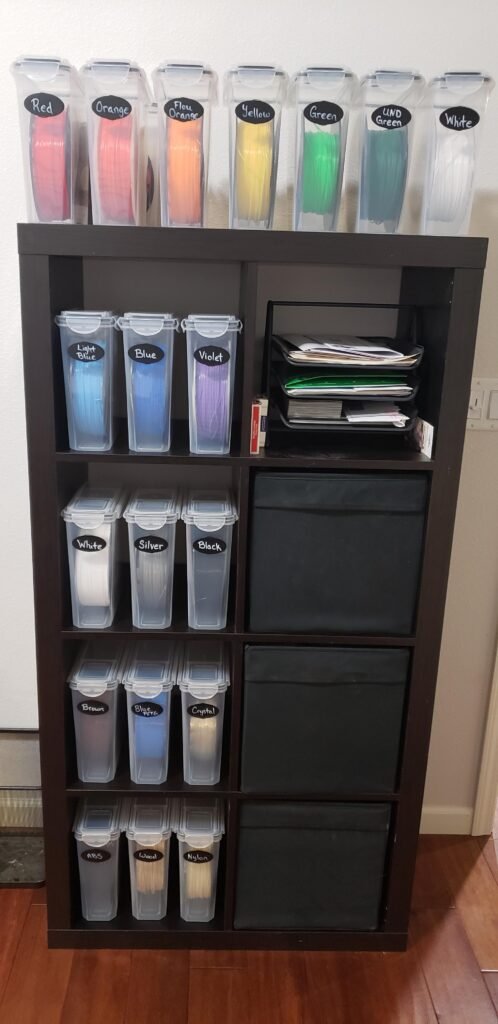How to Properly Store Your PLA Filament
If you’re an avid 3D printer user, you probably know how important it is to store your PLA filament properly. But do you know why it is so crucial, and what are the best ways to store it? In this guide, we will discuss the significance of proper filament storage, common problems that can arise if not stored correctly, and the best methods to store your PLA filament to keep it in top condition. Let’s dive in!
Why Proper Filament Storage Is Important?
Proper storage of your PLA filament is essential to maintain its quality over time. PLA is a biodegradable thermoplastic that is sensitive to moisture and heat. When exposed to these elements, PLA filament can become brittle, which can lead to poor print quality and even nozzle clogging.
Storing your PLA filament in a dry and cool environment will prevent it from absorbing moisture, thus preserving its integrity. By taking the necessary steps to store your filament correctly, you can ensure that your 3D prints turn out smooth and flawless every time.

3D Printer Filament Storage: Keep It Dry
One of the main enemies of PLA filament is moisture. When PLA filament absorbs moisture from the air, it can lead to a range of problems, such as poor print quality, brittle filament, and nozzle clogging. To prevent these issues, it is crucial to store your PLA filament in a dry environment.
Now, let’s take a look at some common problems that can arise if you don’t store your PLA filament properly:

Possible Problems and Causes
| Problem | Cause |
|---|---|
| Filament goes brittle | Exposure to moisture |
| Color fading | Exposure to sunlight |
| Poor print surface quality | Moisture absorption |
| Crackling noises from the hot end | Brittle filament or clogs in the nozzle |
| Nozzle clogging | Moisture absorption or foreign particles |
By understanding these potential issues, you can take the necessary steps to store your PLA filament correctly and avoid encountering these problems.

Best Way to Store 3D Printing Filament
There are several methods you can use to store your PLA filament properly. Here are some of the best ways to keep your filament in top condition:
Gallon Storage Bags
Gallon storage bags are an affordable and practical way to store your PLA filament. Simply place your filament spools inside the bags and zip them up to keep moisture and dust at bay. Make sure to squeeze out any excess air before sealing the bags to create an airtight environment.
Vacuum Storage Bags
Vacuum storage bags are another excellent option for storing your PLA filament. These bags are designed to remove excess air, creating a vacuum seal that protects your filament from moisture and dust. Vacuum storage bags are especially useful for long-term filament storage.
Cereal Storage Boxes
If you’re looking for a budget-friendly storage solution, consider using cereal storage boxes. These boxes are typically made of sturdy cardboard and come in various sizes to accommodate different filament spool dimensions. To keep your PLA filament dry, place desiccant packets inside the boxes to absorb any excess moisture.
Large Storage Container
A large storage container, such as a plastic bin or storage tote, can also be used to store your PLA filament. Make sure the container has a tight-fitting lid to prevent moisture from entering. You can organize your filament spools by color or type inside the container to keep them organized and easily accessible.
Wall Racks
Wall racks are a convenient way to store your PLA filament spools while also saving space. By mounting wall racks in your 3D printing workspace, you can keep your filament visible and easily accessible. Choose wall racks with adjustable arms to accommodate different spool sizes and configurations.

Repairing PLA Filament
If you encounter filament that has gone brittle or is showing signs of moisture absorption, you may be able to salvage it through a process known as “drying out.” To repair PLA filament that has absorbed moisture, follow these steps:
- Preheat your oven to around 50-60°C (122-140°F).
- Place the spool of PLA filament in the oven for a few hours to allow the moisture to evaporate.
- Make sure to monitor the temperature closely to prevent overheating or melting of the filament.
By drying out your filament, you may be able to restore some of its original properties and prevent print quality issues.

In Conclusion
Properly storing your PLA filament is crucial to maintaining the quality and integrity of your 3D prints. By storing your filament in a dry and cool environment, you can prevent common issues such as brittleness, poor print quality, and nozzle clogging. Consider using gallon storage bags, vacuum storage bags, cereal storage boxes, large storage containers, or wall racks to keep your filament in top condition. If you encounter filament that has absorbed moisture, you can try repairing it through a drying process. With the right storage methods and care, you can ensure that your PLA filament lasts longer and produces flawless 3D prints every time.
